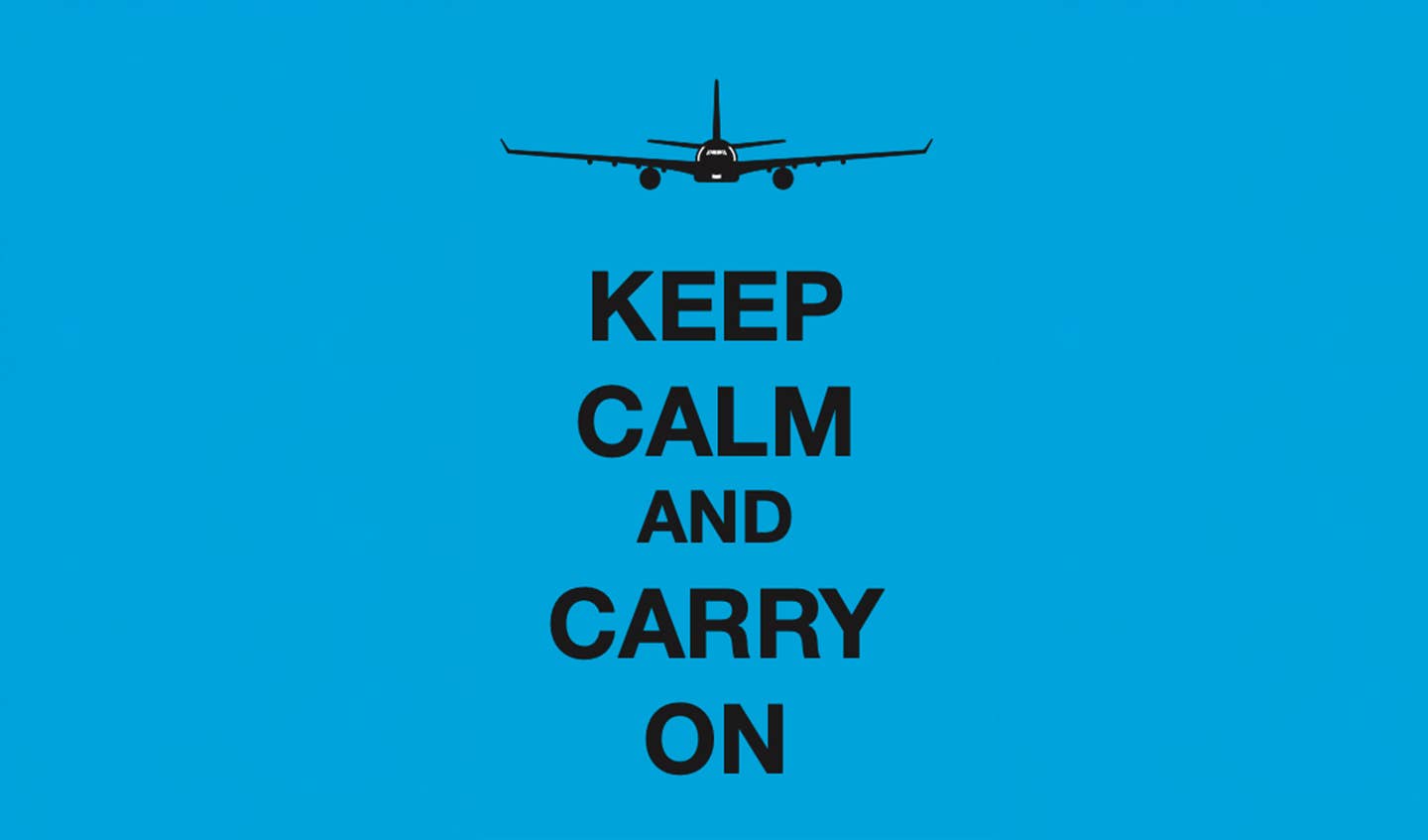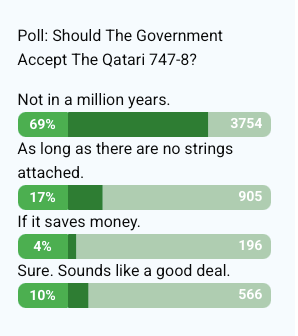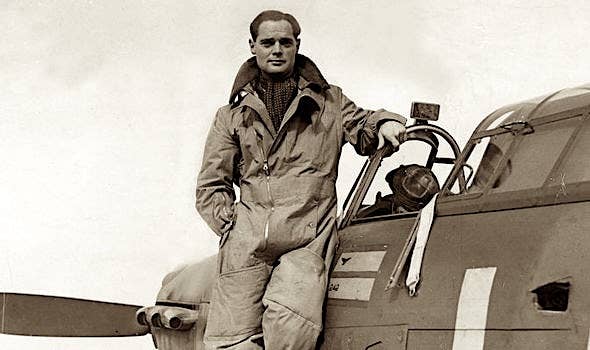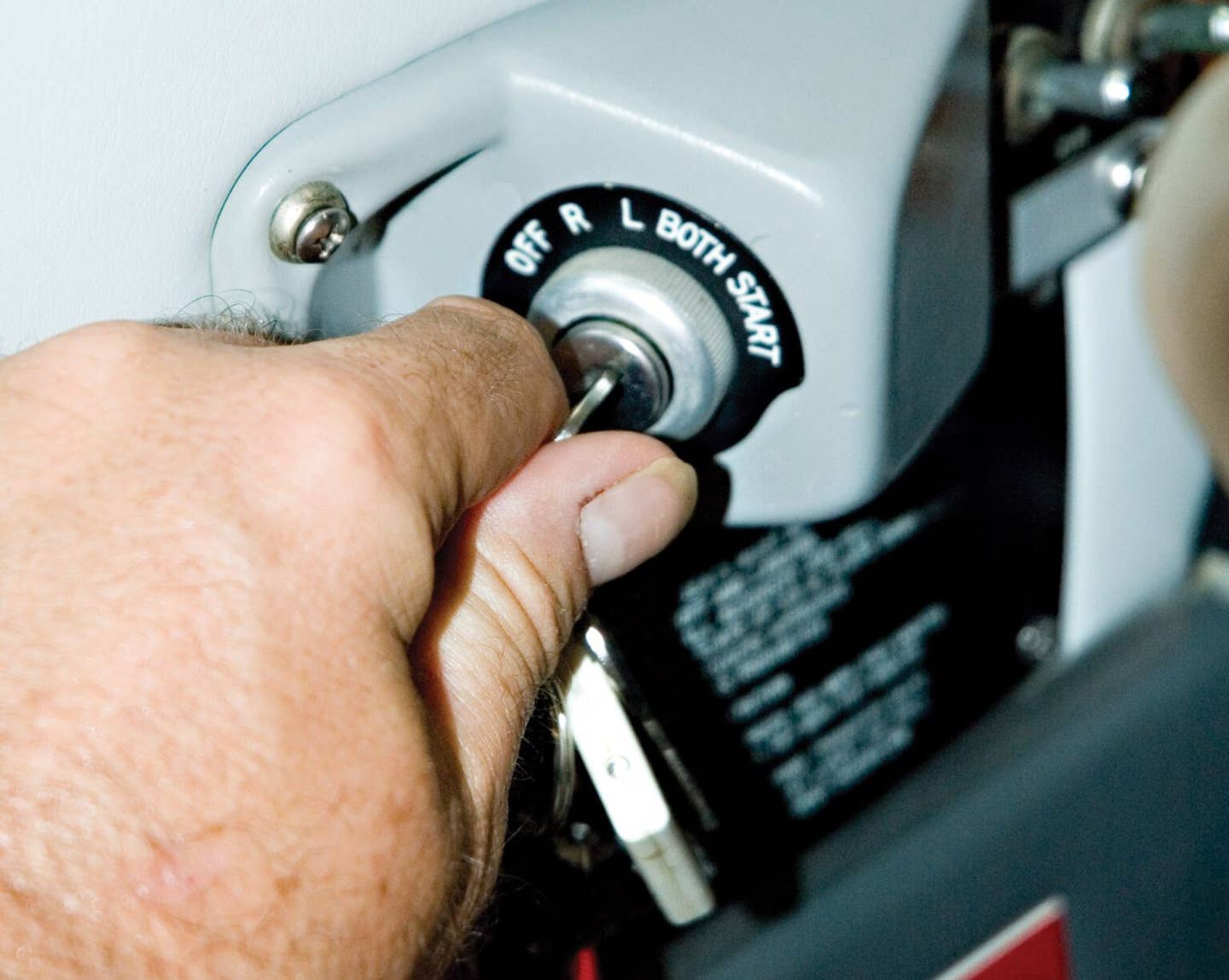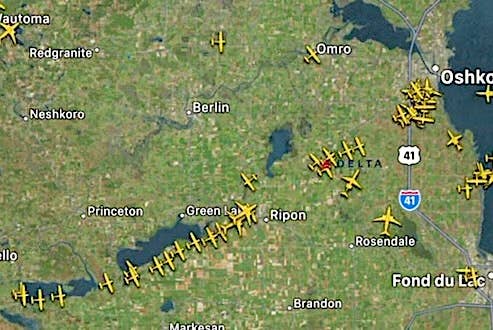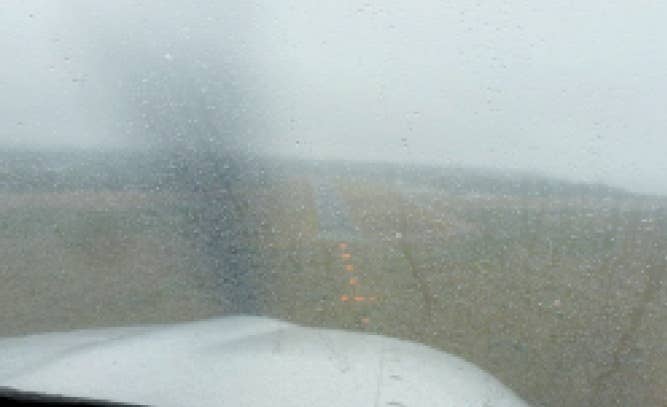Pelican’s Perch #49:Starting an Airline
Nowadays, starting a new airline requires tens of millions of dollars in capital and nearly that many pages of FAA paperwork. But back in the 1950s, all it took was a $10,000 WWII-surplus transport, a few hungry time-building pilots, and a lot of chutzpah. AVweb’s John Deakin was just starting his aviation career back then, and he tells a first-person tale of such a venture that actually got off the ground, albeit briefly.
 While hanging around and working at the Sarasota-Bradenton airport (SRQ) in the mid-50s, I became aware of a small group of pilots my father called "airport bums." It was years before I realized that was intended as a derogatory term, for they were my heroes. That was probably why Dad put me into forced labor in the family glass-blowing business at age 12 to 17. Years later, I accused him of violating the child labor laws, but he just grinned and said, "Yeah, but it sure kept you out of trouble!" In these more complex times, one wonders what "trouble" he had in mind. The local "heroes" all drank, smoked and womanized to excess, so perhaps that's what he was worried about. Oddly enough, I never smoked or drank, and I was much too busy with airplanes to womanize, even if one had taken an interest in the greasy, smelly kid with the airplane grease under his fingernails.
While hanging around and working at the Sarasota-Bradenton airport (SRQ) in the mid-50s, I became aware of a small group of pilots my father called "airport bums." It was years before I realized that was intended as a derogatory term, for they were my heroes. That was probably why Dad put me into forced labor in the family glass-blowing business at age 12 to 17. Years later, I accused him of violating the child labor laws, but he just grinned and said, "Yeah, but it sure kept you out of trouble!" In these more complex times, one wonders what "trouble" he had in mind. The local "heroes" all drank, smoked and womanized to excess, so perhaps that's what he was worried about. Oddly enough, I never smoked or drank, and I was much too busy with airplanes to womanize, even if one had taken an interest in the greasy, smelly kid with the airplane grease under his fingernails.
 | |
| PBY. |
For some years, the local talk among these airport bums was about possible ways to make money with airplanes, preferably with the least possible amount of work. The grand idea was to acquire a surplus military cargo aircraft, and fly cargo north and south between the Americas. I didn't realize it at the time, but the primary considerations were the warm sunshine, easy booze, easy women, and similar companions to be found in the bars throughout the Caribbean. Me, I just wanted to fly whatever was used, and I was fascinated by the talk, along with the inevitable war stories of airlines and old jobs in the past.
The first really serious scheme was to get a PBY, convert it to cargo use, and fly it to the western Yucatan, landing in the ocean near the fishing fleet. We would haul supplies for the fleet down from Florida, and haul fresh Red Snapper back. A common theme throughout all those years and ideas was "Pay for the round trip with the cargo southbound, then all the northbound cargo is pure profit."
Before we could buy the airplane, we had to find the money, for the local airport bums didn't have any, of course. The only pilots with money were airline captains, everyone knew that.
My Airport-Bum Heroes
 | |
| deHavilland Dove. |
The primary character in this story must be Bill Woods, whom I have not seen or heard from in 40 years. He just showed up around SRQ, and somehow began flying oddball charter flights, picking up a buck here and there, and in general, just hanging around. He took me along a few times in the deHavilland Dove, and I learned a lot on several charters to Cuba (pre-Castro) and Grand Cayman, as well as points north such as Harrisburg (in the winter). I remember distinctly the first time he let me make a full formal position report at some point between Key West and Cozumel, talking to "Boyeros Radio," the primary ATC contact in Havana. GMT time was still something of a mystery to me, and position reports were really complex for a neophyte. I went to great trouble to note the time we guessed we were over some fix, something like 2347Z, and the time to the next fix, which was well over an hour down the line. Bravely, I picked up the big gooseneck mike, and trying to imitate Bill's deep radio voice, said, "Boyeros, deHavilland 73795, over (whatever) at two three four seven, eight thousand, IFR, (whatever) at two five zero two, (whatever) next." I was really proud of myself.
Bill had his hands full, for we were in heavy weather, no autopilot, lots of rain and turbulence, and like most old airplanes, we were getting really wet inside from leaks. (To this day, I believe the primary advantage of pressurization is that all the leaks are OUT.)
The report was done on a junky old HF radio, and there were lots of thunderstorms around (in fact, we were probably in one), so it was no surprise when Boyeros came back in heavily accented English mixed with a lot of static with "Say again time over next position?"
I checked my scrawled notes, and repeated, "Estimating (whatever) at two five zero two."
There was a long pause, and I figured he'd gotten it. But then he came back, and said, "deHavilland 73795, confirm your estimate is "two FIVE zero two?"
"That's affirmative, Boyeros, two five zero two."
Bill had been swearing steadily at the rough weather, but now he broke into a torrent of abuse, this time directed at me. "THERE'S NO SUCH THING AS A TIME OF TWO FIVE ZERO TWO, YOU STUPID *******!" He grabbed the mike, and corrected the report, much to Boyeros' relief.
I'm not sure why Bill let me hang around him after that, perhaps it was for the entertainment value.
 | |
| PBY. |
In the early days of the operation, Dick Prim (USN Retired) was another "local character." Oddly enough for an airport bum, he also actually had a real flying job with Tropicana, first with a Bonanza, then a Travelair. He also had an instructor's rating (they were ratings in those days), and he was the instructor who put me through my instrument training in "The Navy Way," consisting primarily of shooting LF Range approaches to the Tampa airport, and basic maneuvering on primary instruments, because that's all the little Tri-Pacer had. He insisted that all takeoffs and touchdowns were "zero-zero," and since the windows were covered with amber Plexiglas (he could see out), and I wore blue Plexiglas goggles that allowed me to see the instruments in blue, ALL outside view was totally blocked by the combination of blue and amber. That excellent training would save six lives in an iced-up Twin Bonanza years later, but that's another story.
Bill and Dick scoured the area for "investors" to help launch the new airline. The pitch was to put up some small amount of money, say $2,000 each, and become a "stockholder" in this "airline." The real attractant was that all stockholders would get to ride along to the hot spots of the Caribbean, any time they wanted, free. There were a lot of hustlers in Florida in those days, and in short order, we had something like ten "investors," referred to behind their backs as "pigeons."
A PBY was found, a deposit made, and plans were made to go get it. Then somehow, the PBY was sold to a buyer in the Philippines. There was talk of me going along as the copilot on the flight out there, but somehow that never happened. I was crushed.
Now, you have to understand, no one but me knew I was a part of this new airline, and of course, I had no idea that others didn't know that. After all, how could this thing ever do without me, I was right there! I was 17.
Part of the problem was legal. The rules of the day were much simpler then, but genuine, legal cargo aircraft had to be operated under a certificate, and they were expensive. Bill figured out early on that the only way we could work it was to buy some airplane with a "Limited" certificate, and the only way we could operate legally (well, sort of legally) was to actually buy the cargo, transport it on our own airplane, then sell it at the other end.
Caribbean Air Transport
 | |
| TB-25N. |
Military surplus North American B-25s were still pretty common, and there were a fair number of them available. Most of them would sell for about $10,000, in flyable condition, so the attention turned to that type. In 1958, we bought N9868C, which my logbook shows as a TB-25N. We spent months converting it from a medium bomber to a cargo aircraft, by stripping out everything not necessary for flight. The top of the bomb bay was removed (we later found that is a structural item), and a heavy floor was built in the bottom of the bomb bay. I did so much of the work on it that I suppose they felt they couldn't leave me behind on the first flights, so I got to go.
On January 27, 1959, Bill Woods test-hopped it, and "checked himself out." I got about 20 minutes of stick time. There were a number of test flights after that, a flight down to Venice for the installation of an old ART-13B HF radio, and I got to go on all those, picking up a little time here and there, and getting my first landings. I had 471 total hours when I got my first landing in the B-25.
I didn't get to go along for Bill's type rating ride, and I remember being livid over that. What a pest I must have been! But I worked on that airplane, man, how I worked! No job was too dirty, and I'd often be working long past midnight, trying to meet some artificial deadline or other. Somehow, the story was always, "We gotta be ready by Monday," but somehow, months slipped by.
On March 17, 1959, we did our first "revenue" flight under the moniker of "Caribbean Air Transport," and by then I was so firmly ensconced in the right seat, I suppose no one had the heart to tell me I couldn't go. I do remember one half-hearted attempt to boot me out, someone said, "John, you can't go, you'd need a passport."
I whipped my new passport out, and just said, "Got it." Somewhere along the way, $500 per month was mentioned as pay, but I rarely got it. I'm not sure Bill did much better, but once in awhile he'd slip me a one-hundred dollar bill.
During the two or three years it took for this dream to come together, the basic idea always remained, "Pay for the round trip with the southbound load, and then anything northbound will be gravy." But the nature of the trips changed, from landing in the water to pick up a load of fresh fish (A B-25 is not exactly amphibious), to a more conventional operation, with Belize (then British Honduras) as the key point in Central America.
To my knowledge, no advance arrangements were made in Belize. Bill made all the arrangements for us to buy frozen meat, vegetables, bread, ice cream (in dry ice), and other edibles, to be delivered at the aircraft. I personally loaded every box, first by filling the nose compartment, then the "tunnel" under the pilot's seat, then the bomb bay, the waist section, and finally, I stuffed the really light stuff (bread) back in the tail. About seven thousand pounds in all, full fuel, four or five "investors," and away we went, 1:05 to Key West, then 3:15 to Belize.
 | |
| B-25 cockpit. |
Bill made the takeoffs, after which I happily did all the flying and made all the landings, a pattern that was repeated all the time we flew together. I literally never got a takeoff, and he never did a landing. I thought that was a bit bizarre, but was too afraid of losing the landings to ask for a takeoff.
As soon as we arrived on that first trip, Bill went hustling into town to arrange for trucks and a place to sell our stuff. He showed up back at the airport with trucks a few hours later, and we unloaded. The frozen stuff was starting to melt, but the ice cream was doing well, and we got it to a warehouse with refrigeration pretty quickly. That evening, we put the word out through the embassies and hotels that there was fresh American produce, ice cream, bread, and meat available. Our "investors" were helpful in this, for they hit every bar and whorehouse in town that night, and put out the word without even intending to. Girls and booze were really cheap in that town, and stories of those nights assured an eager flow of investors when the stories got back home. In a few cases, the stories got back to the wives, and those investors tended to drop out. I can't understand why.
Our investors may have done good work in spreading the word the night we arrived, but they weren't much use the next day, so Bill and I sold the goodies by ourselves, making up prices as we went along. We were absolutely mobbed, and sold out before noon. I remember charging $10 for a big Florida watermelon, and two proper British ladies nearly coming to blows over it. One was a certain "Lady Hoare," who was the wife of the local "High British Official," and didn't let anyone forget it. Fortunately, I heard her name before I was introduced, or I'd have had a hard time controlling myself. Honest, I couldn't make this up, she insisted on being called "Lady Hoare." After a time, it developed a certain ring.
Bill and I were elated that night, for the income would not only pay for the round trip, but showed a very nice profit, even without a northbound load! But then we paid the hotel bill, and found our "investors" had managed to charge all manner of things to their rooms at the Fort George Hotel, the finest hotel in town. Some were not too clearly identified, but we were pretty sure some of the local bar girls were involved. I remember some yelling and shouting over the bill, but I left all those business arrangements to Bill, I had enough to do maintaining, flying, and loading the airplane (and selling the produce). Those investors sure slept well going home, and it wasn't fuel fumes we smelled, either. Bill had also celebrated the successful sale of our goods, so he slept all the way home, after making the takeoff as usual.
Immediate plans were made to fly a weekly trip, and there was even some discussion of a whole fleet of B-25s serving the countries of Central America. We made another trip the following week, with much the same results, and an even quicker, more profitable sale! We missed the third week for some reason, but made the fourth week, and so the pattern continued. These were glory days for me, as I was doing the B-25 trips, ferrying new Pipers from the factory at Lock Haven, doing a lot of charter, and flying everything I could get my hands on in the area. One fellow bought an old Lockheed 12, and scared himself to death in it. Looking for help, he asked me if I knew how to fly one. "Sure," said I, never having touched one. So I checked myself out in it, then turned around and gave him "dual," until he felt comfortable. I had all of 540 hours total, and 90 hours of twin time. Another fellow bought an AT-6, and he was also scared to death of it, so I went into my "Aw shucks, I can fly it" act again. After he satisfied himself that he didn't have the basic skills for that airplane, he let me use it anytime, anywhere, all I had to do was put gas in it. There were always suckers willing to pay for the gas for rides or some stick time, so it wasn't long before I was "instructing" from the back seat, sublimely unaware of the pitfalls. I figured it was legal, as long as I wasn't signing off dual instruction.
But alas, the "pigeons" became an insurmountable obstacle to profitability, and we were soon sacrificing paying cargo for freeloading passengers. I can recall one memorable trip where I had three people in the nose, one lying in the "tunnel," two sitting on the footrests down near the floor, two in the normal passenger seats, two on the deck behind the pilot's seats, and of course, two in the pilot seats. Twelve people, just crammed in, and 7,000 pounds of cargo. I think Boeing heard about me, and later used that model for 757 seating.
Weight and balance was "interesting." On about the second trip, while loading, the tail came down and hit the ground with a thump. "Hmmm," I thought. Maybe that's not good? So I shifted the load until it came back up. It didn't seem much different from the first load as far as space and density, and the airplane had flown fine, so I figured right away that as long as the nose wheel would stay on the ground, we'd be ok. After that, I cut a length of 2x4 just the right size, and used that to block up the tail. As we fired up and taxied away, the 2x4 would fall, and we'd be fine.
One of these days I'm going to work out the moments, and see where we must have been, but I'm not sure I really want to know.
Trouble in Paradise
The investors (vice-presidents all, of course) soon fell to squabbling, a lawsuit was filed that grounded the B-25 just hours before a trip, and I was devastated. I'd been hustling Bill to be allowed to get a type rating, and while he was agreeable, we'd not been able to find the time, fuel, or someone to do it. It really hurt, because I just knew I'd never get another chance, and I felt all that B-25 time was lost, if I didn't have the rating. They also owed me several thousand dollars in back pay, but I didn't care nearly as much about that.
Then it dawned on me that the airplane was just sitting there, full of fuel. It wasn't chained down or anything, and the airplane certainly didn't know about the lawsuit. I started calling around, and found an FAA Inspector in the Miami GADO (now FSDO) who was qualified to do B-24 type ratings, and more importantly, willing! Coincidentally, his name was Harry Mitchell, and he said he was a relative of Billy Mitchell, after whom the B-25 is named! I took this as a very good omen. My next problem was a copilot. My dad was a private pilot, active in the restoration and flying of Fairchild PT-19s, so I figured he'd do, and astoundingly, he was willing! What fools these Deakins be.
I had timed all this very carefully so that Bill Woods was out of town, as I didn't want to risk asking anyone for permission, even him. I figured I could later tell him I had the chance and I didn't know where to call him. But as we were getting ready to go, I saw him drive up to the distant FBO, and I figured he'd really be mad if he saw me just taxi out. So I went running up to him, breathless, "Bill, I've got an FAA guy who will give me a rating ride, is that all right with you?" Bless his heart, Bill just grinned, waved me off, and said, "I don't wanna know nothing about it!"
Dad and I finished preflighting, and fired her up. About then, one of the more active stockholders, also an airport bum, happened to drive up, and wanted to know what we were doing. I hollered back that we were just going to move the airplane, and he said, "Wait, I'll go with you," and he drove away to park.
This particular person and I had never really gotten along. He probably figured I was just a smart-ass punk (I can't understand that!), and I saw him as someone who might want to get rid of me. At the time, I didn't know he was also a private pilot, and wanted desperately to get some B-25 time. Of course, I was in the way of that, so the "vibrations" I was getting were pretty close to the mark.
As soon as he disappeared around the corner of the hangar, I made my move, taxiing out at a brisk speed. There was a new control tower, and I'd hung around up there a lot, so I knew both controllers. I think Frank Dyer was working that day, but it might have been Chuck Downs. The angry stockholder realized there was more afoot than just moving the airplane around, and he called the tower to order me back.
"9868C, we have a phone call ordering you to return to the ramp."
"Roger, 68C is ready for takeoff."
"68C, did you understand the order to return to the ramp?"
"That's affirmative, but that has nothing to do with you, if there's no traffic, you are required to clear us for takeoff."
"Johnny, I sure hope you know what you're doing, 9868C, you're cleared for takeoff."
 | |
| B-25. |
And away we went. The beauty of the whole thing is that no one knew where I was going, and the assumption would be St. Petersburg, where Bill had gotten his type rating. I turned in that direction until I thought we were out of sight, then set course for Miami International. I later heard that phone calls were indeed made to St. Pete, but of course, no one there knew anything.
I think Harry Mitchell was a little shocked when he saw my age, or the lack thereof, and he started out a little stern. He quizzed me rather closely, and I told him the whole story, 100% straight. I think he was a little amused by the whole thing, and for some reason, he decided to go ahead, even taking the right seat and leaving my dad behind (can you picture a modern FAA type doing that?). The oral went very well, mostly because I'd worked on the airplane so much, had even changed an engine pretty much on my own, so I knew the systems cold. I had over 100 hours in it by then, had bootlegged a little practice in it, had made a number of real instrument approaches, so the flight check went pretty well, too. Harry mumbled something about judgment, stealing airplanes and being more careful, but I don't remember much about that, I was in a daze at having my first type rating, with just over 600 total hours, at 19.
Dad and I landed back at SRQ after dark, with no one around, when I fully expected flashing lights and sirens. I quietly secured the airplane in the same old spot, and figured she'd never fly again. I was afraid the manuals would disappear, so I put them in my car trunk for safety. Good thing I did.
Nothing ever came of my airplane theft! The angry stockholder had a few angry words for the way I'd left him in the lurch, and claimed he wouldn't have stood in my way. He said he just wanted to go along. I've always felt a little bad about that.
The last revenue flight was on 6/23/59, and I swiped the airplane for my rating ride on 7/14/59.
Figuring poor old 68C would never get out of litigation, we promptly went looking for new pigeons, another airplane, and a new name. It didn't take long, I show a test hop on N3451G on 8/2/59, only two weeks later, with the company reborn as "Caribbean Enterprises." In that airplane, I became a captain, flew through hurricanes, suffered engine failures, and had many other adventures, but that's for another column, perhaps.
Don't Get Mad, Get Even
I did have one more minor brush with 68C. Somehow, a year or two later, the litigation was settled, and 68C was sold to Warren Henderson, at that time a minor politician/businessman in Venice, the next town south of Sarasota. He was part of a group that wanted to do something similar, something about horsemeat to the islands, or something, I don't remember. I approached the new owners about perhaps flying for them, but got brushed off rather rudely, with them saying something about hiring a "real pilot." Then I told them the old corporation still owed me a lot of back pay, and they got even more unpleasant, just blew me off.
But a few days later, just as I knew they would, the old and the new owners together approached me a bit more courteously, with "John, we can't find the manuals, do you have any idea where they might be?"
"Gee, (all innocence) they're not in the airplane?"
"No, we looked, really hard, and we can't fly it unless we have the original manuals, with the serial number, and all. In fact, we can't even complete the sale, and that's what we're here for. You know, keeping those manuals is stealing and a crime, we wouldn't want to get the police involved, here."
"Really! Gee, I think not paying employees is a kind of stealing, and I think that's illegal, too?"
You never saw so many jaw muscles jump at once.
One finally gritted his teeth, and said, "How much?" Good man, right to the essential point!
"Oh, about three months back pay, at $500 per month - cash."
They retired to a point several hundred feet away, and had a heated discussion, followed by everyone fishing out their wallets. They came trooping back to where I was leaning against my car (a neat little '55 Chevy) and said, "All we've got here in cash is $700, take it or leave it."
I counted it out calmly, while they just steamed, thought it over, and said, "Ok, I'll take it."
Then I popped open my trunk, and said, "Why lookee here, I do believe these are what you're looking for."
Would you believe, they never even said "Thank you?" They grabbed the manuals, shot me a brace of dirty looks, and off they went.
Postscript
 | |
| Cessna 310D. |
There is a tiny sequel. For most of 1960, I flew a brand-new Cessna 310D for the Secretary of State of Florida, Tom Adams, one of the nicest bosses I've ever had. I had dropped him off somewhere in Florida, and was on the way somewhere else, when who should I happen to see in the FBO but Warren Henderson, then running for some Florida office. He was shaking hands as politicians do, but as he got to me, he remembered. I saw the flash of anger in his eyes, but he covered it up well, smiled, and asked, "How are you, John?"
"Fine, how are you?"
"Oh, we've got problems, I'm on the campaign trail, trying to get home to Venice tonight, and have to leave again in the morning, but my airplane is out of commission, it's a real mess."
I thought for a moment, then decided what the heck. "Well, I'm taking off right now with an empty airplane, and I'd be glad to drop you off in Venice, if you like."
He looked startled, and I could see the question in his eyes. I just grinned, and said, "No charge, this time." He had the grace to grin back, and accepted my offer. In Venice, as he climbed out of the back seat, we shook hands, and I said, "Hey, I hope there are no hard feelings?" He just said, "I'll just say one thing, you're one smart son of a bitch, and thanks for the lift!" And he was gone.
My boss was a Democrat, and I think Henderson was a Republican, maybe that's why he was so huffy?
Be careful up there!

